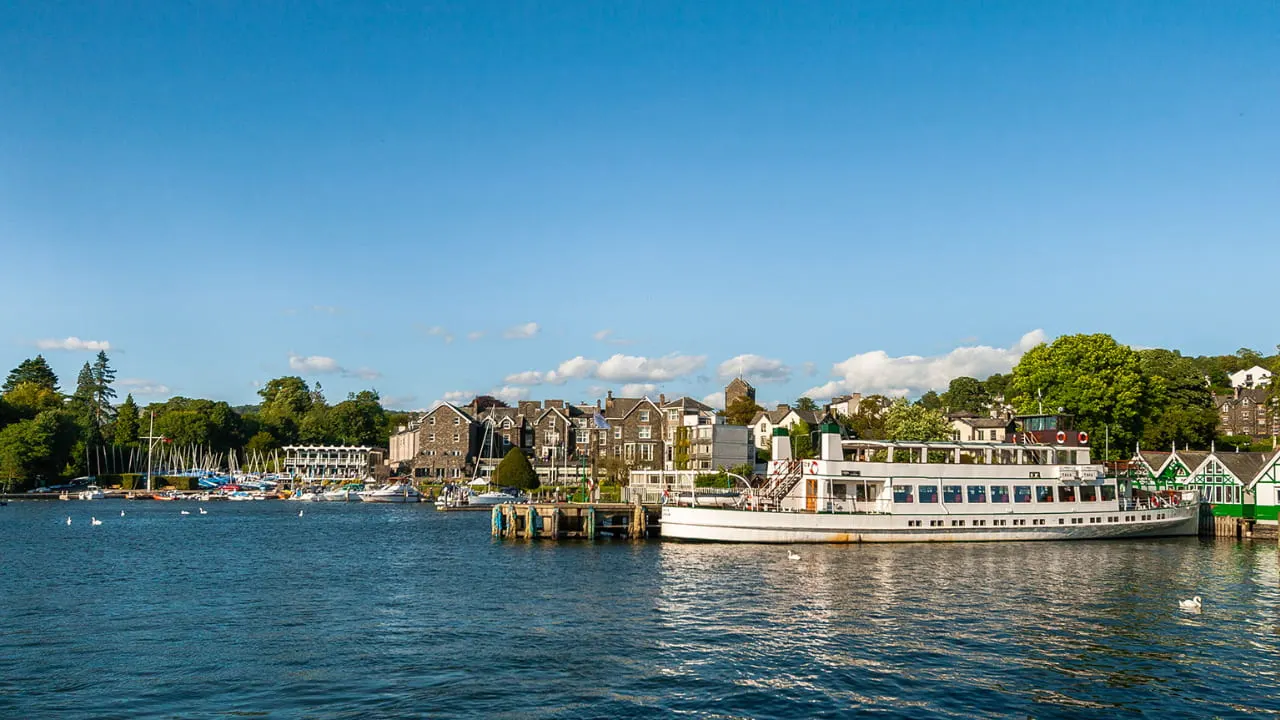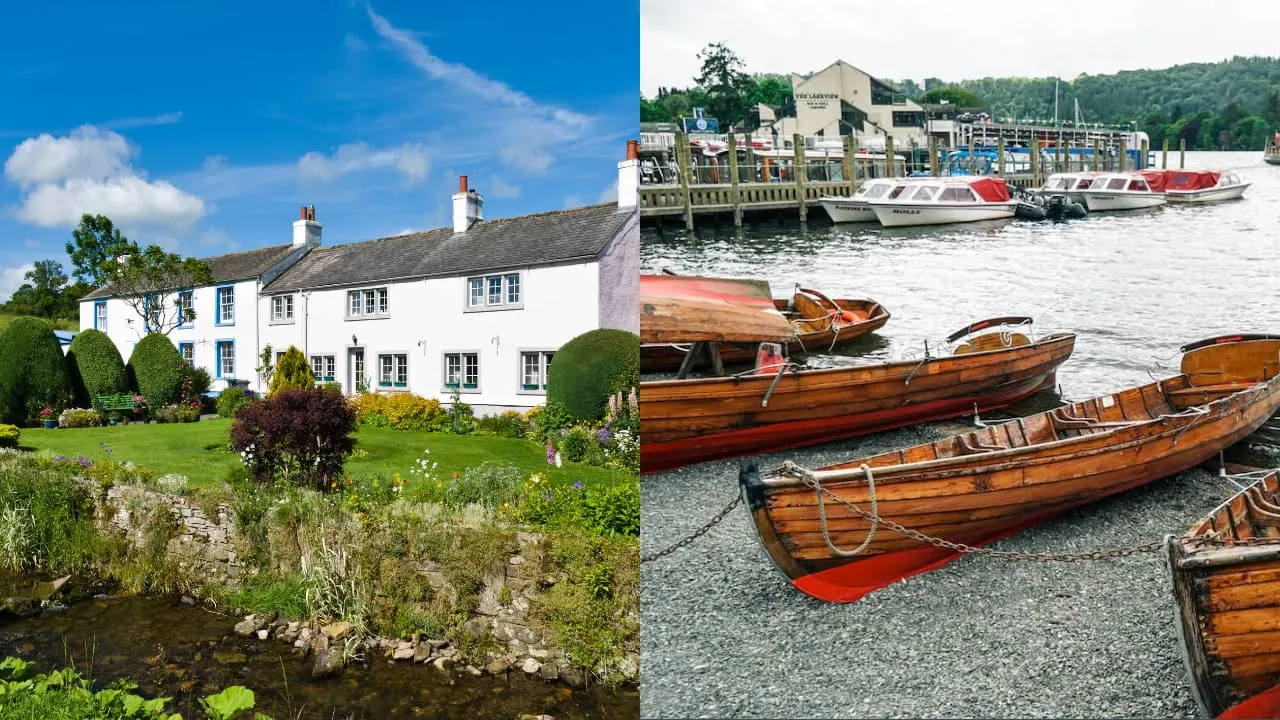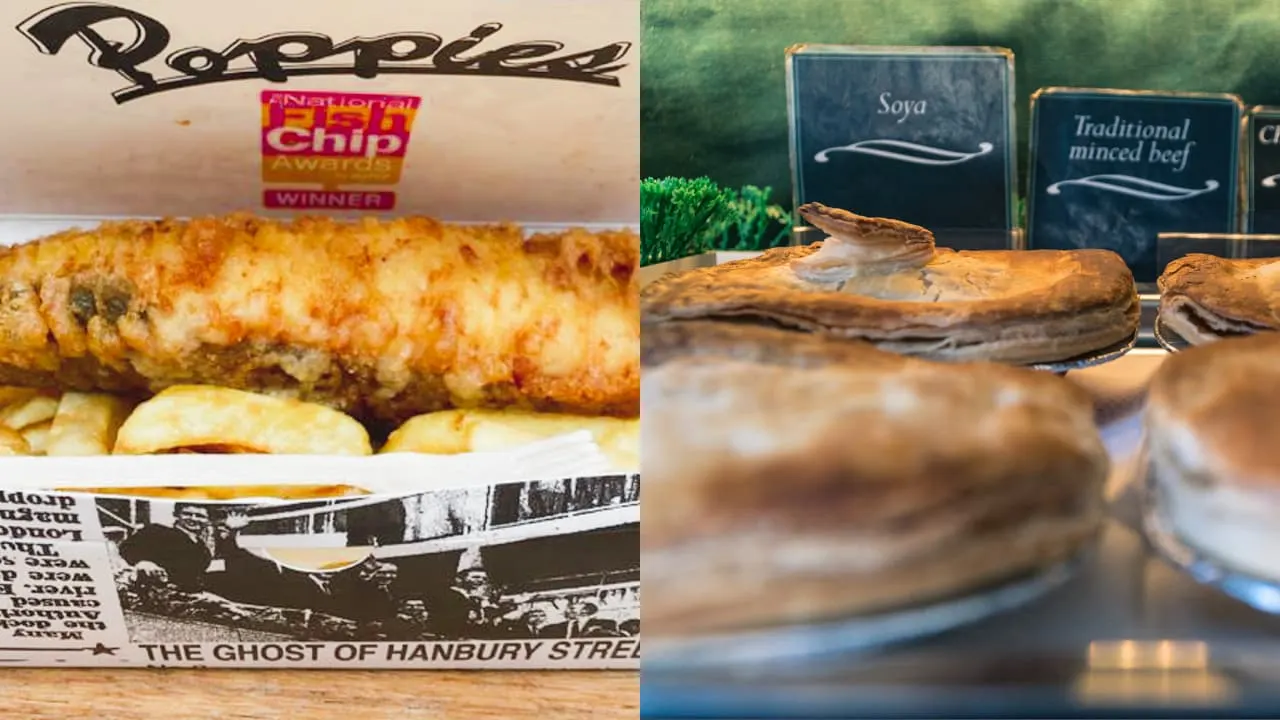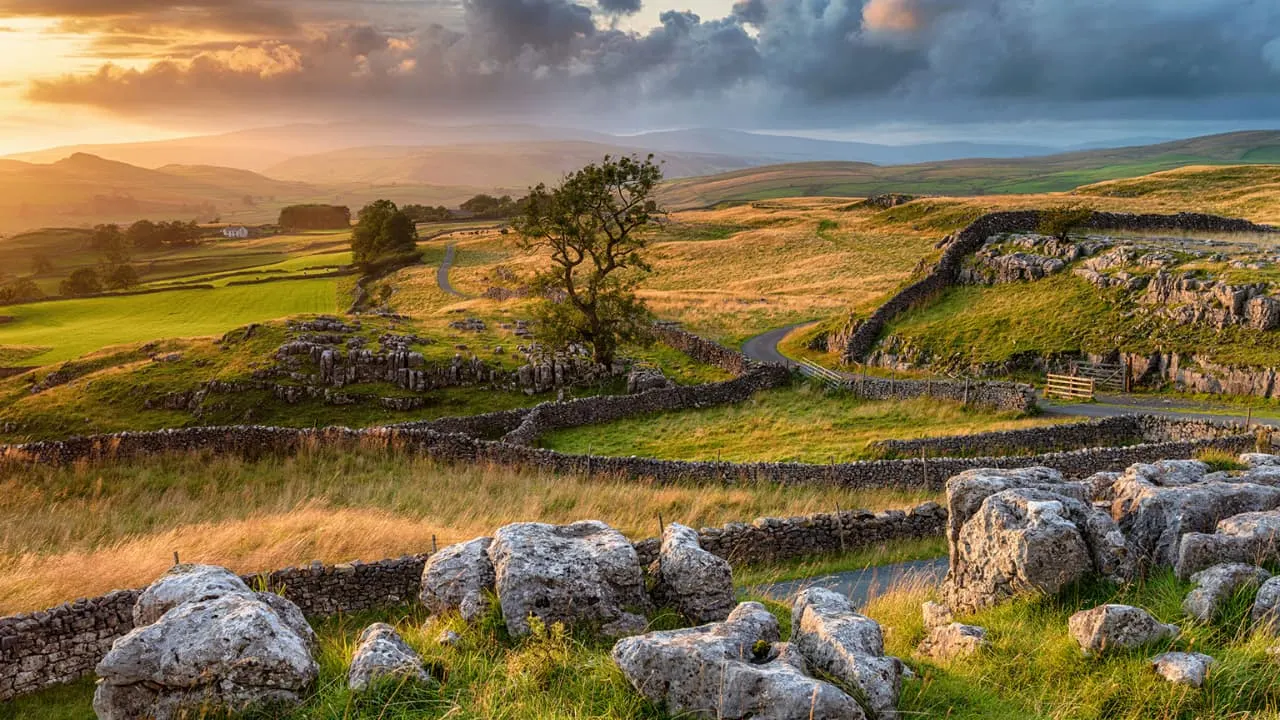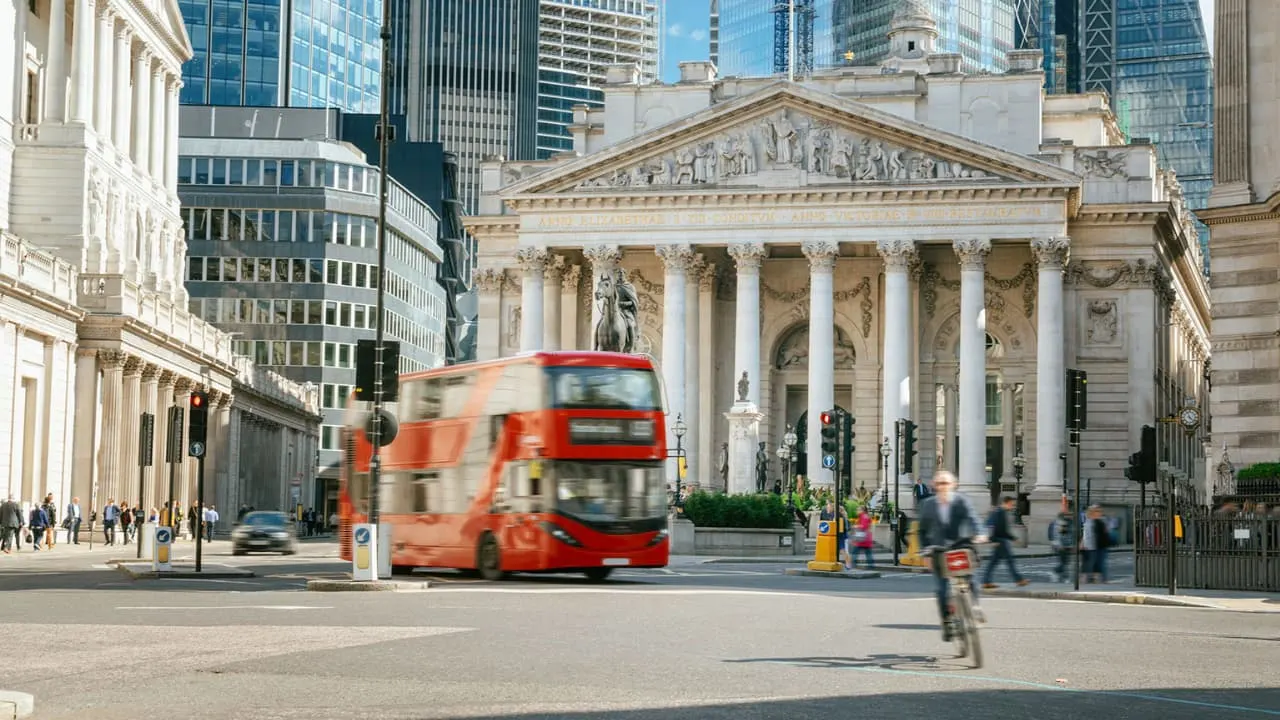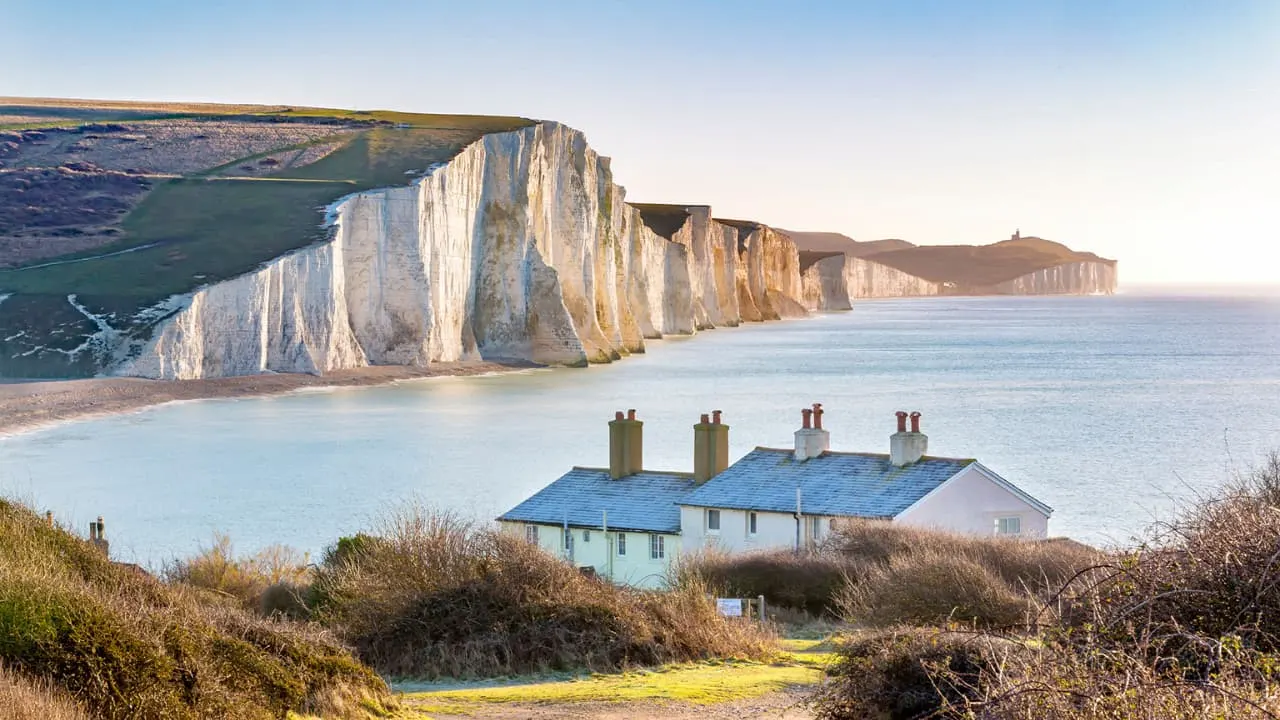The UK is full of historic cities, rolling countryside, breathtaking coastline and stunning mountain ranges. To truly take it in, the best way to travel is by train. Take your time exploring, and spend as long as you want at each place.
These DYI train tours are designed to go through the most scenic train tours in the country. Whether it’s cities or natural landscapes, there is an option for you to explore the best of the UK than by train.
Here’s some inspiration for your next train tour around the UK.
Disclaimer: Hi! this post may contain affiliate links which will take you to online retailers that sell products and services. If you click on one and buy something, I may earn a commission, see my Affiliate Disclosure for more details.
Yorkshire Rambler

Yorkshire is a historic county in northern England. It’s well known for its Roman and Viking heritage, Norman castles, medieval abbeys and Industrial Revolution cities. As well as history and heritage, Yorkshire is also home to some of the most beautiful scenery in the UK. There are three national parks in Yorkshire – the Yorkshire Dales National Park, North York Moors and a large chunk of the Peak District National Park.
A great place to start is the city of Sheffield in South Yorkshire. It’s right on the doorstep of the Peak District National Park, so it’s a good opportunity to explore the great outdoors. The city also has a wealth of attractions, from the Millenium Gallery to the Sheffield Botanical Gardens. Sheffield is home to the largest theatre complex outside of London, so if you want to catch a show then head to Tudor Square.
From Sheffield, catch the train to Leeds (the quickest journey is 39 minutes). Leeds is full of historic buildings, such as Temple Newsam, Kirkstall Abbey and Harewood House.
You can also explore Yorkshire’s industrial past at the city’s various museums like Armley Mills and Leeds City Museum. One of the best museums is the Royal Armouries, home to the National Collection of Arms and Armour.
Leeds is quickly rising through the ranks as a foodie city, and you’ll find a whole slew of restaurants and eateries around the city centre.
Next, head further north to York (22 minutes). This walled city was founded by the ancient Romans. York is best explored by foot, and a great place to start is by walking along the remains of the walls. When you explore the city centre, make sure to stop by York Minster, the massive 13th century Gothic cathedral. This impressive building is one of the largest of its kind in Northern Europe. For a little retail therapy, head to The Shambles, an old street with overhanging timber-framed buildings housing all kinds of independent shops and boutiques.
From York, take the train to Malton (24 minutes). Malton is a market town with the self-proclaimed nickname of ‘Yorkshire’s Food Capital’. It’s home to a staggering wealth of artisan shops and food festivals, so if you fancy yourself as a gourmand, then it’s worth exploring the town.
From Malton, take a bus to Pickering (20 minutes). From the 1930s themed Pickering Station, you can head to the seaside town of Whitby on the North Yorkshire Moors Railway. This is one of the world’s greatest heritage railway experiences. Climb aboard a steam or diesel train which takes you through 24 miles of breathtaking scenery.
At Whitby, make sure you climb the famous 199 Steps up to Whitby Abbey which overlooks the town. This is said to be the inspiration for Bram Stoker’s Dracula. But that’s not all. Whitby has a lot of interesting history, from the jet industry (those gleaming black gemstones that the Victorians loved), to Captain Cook who was born nearby and later trained in Whitby.
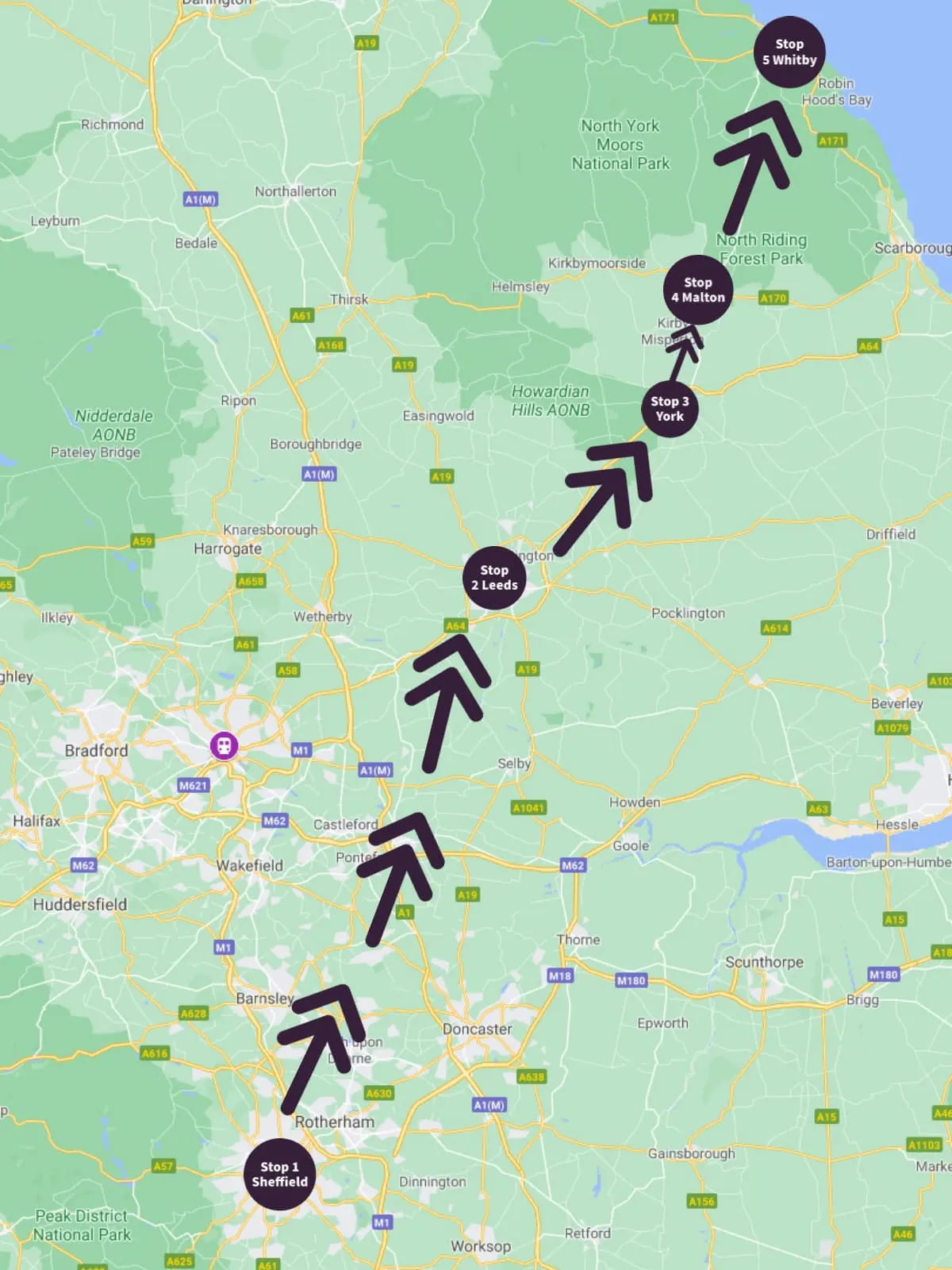
West Highlands
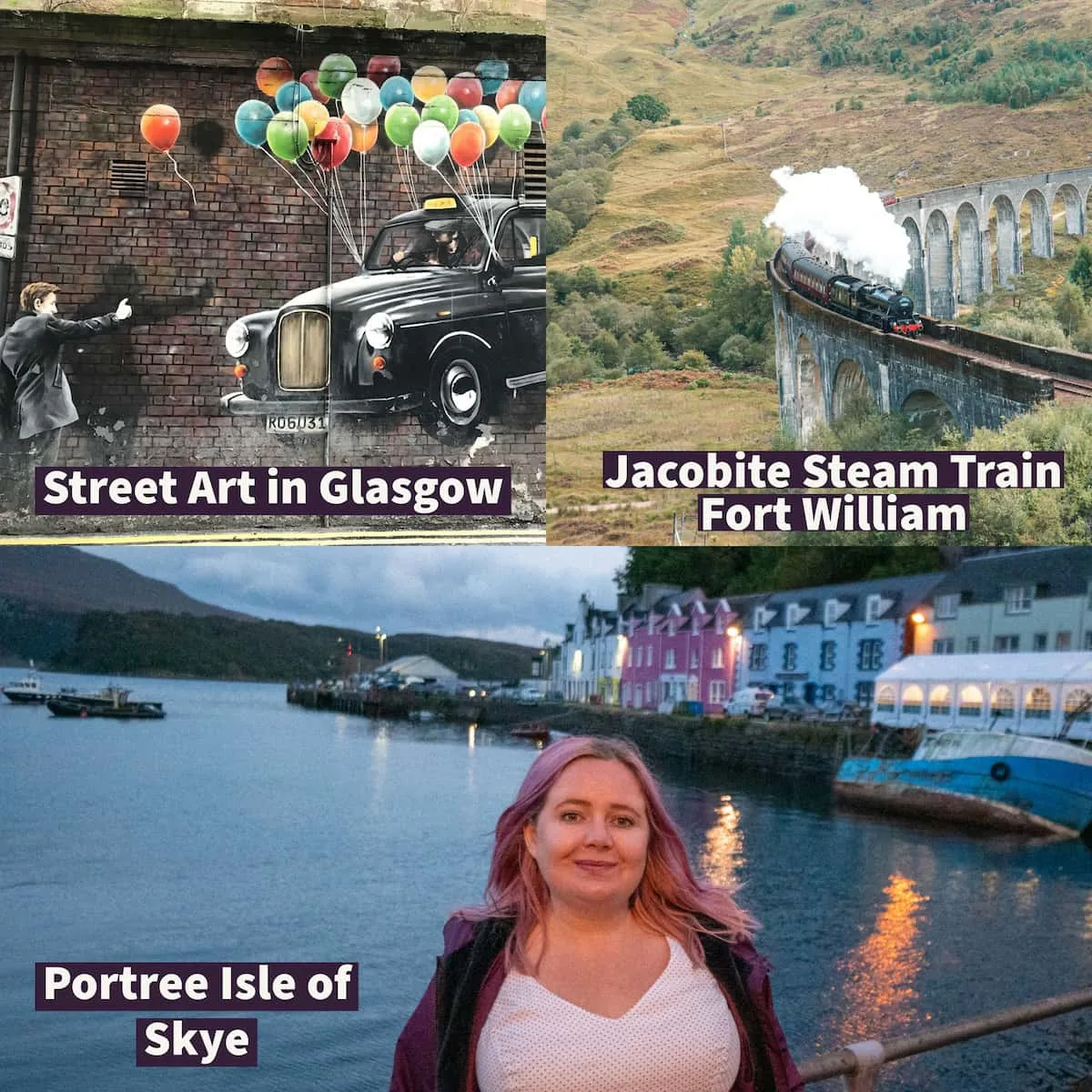
The Scottish Highlands are a truly magical place. Think breathtaking landscapes, big skies, dramatic scenery, fantastic food and welcoming people. It’s a natural playground just begging to be explored. The western part of the highlands stretch from the Moor of Rannoch to the west coast past Glen Coe and Fort William.
The West Highlands are bursting with grand scenery, with towering rocky mountains to wild glens and sprawling moors. Naturally, the best way to explore the region is by train. There’s one train that goes all the way from Glasgow to Mallaig, so you don’t have to worry about swapping trains. You can either journey the whole way through (5 hours and 14 minutes) or stop at some of the most notable spots below.
Start your journey in Glasgow, Scotland’s cultural hub. As well as a thriving music scene and plenty of acclaimed museums, the city is home to institutions like the Scottish Opera, Scottish Ballet and National Theatre of Scotland. So if you’re a culture vulture, it’s definitely worth exploring.
While you’re here, it would be rude not to sample some of Scotland’s finest whisky. The Clydeside Distillery is a historic scotch maker located in the old Pumphouse building down at the docks. Join one of the tours to learn more about the distillation process, and sample a few wee drams of whisky.
From Glasgow, jump on the train to Mallaig. Stop at Arrochar and Tarbet (1 hour and 14 minutes). This railway station sits between the villages of (you guessed it), Arrochar and Tarbet. Arrochar lies on the shores of Loch Long, and Tarbet on the shores of Loch Lomond. The two villages are only a half hour walk apart, so you can cover both if you wish. Arrochar is popular with hikers, especially since it’s home to the beautiful Arrochar Alps. At Tarbet, you can head to the pier and choose from a variety of cruise options to explore the largest freshwater lake in Scotland.
Next stop, Fort William (2 hours and 38 minutes). This is the largest town in the Highlands, second to the city of Inverness. It’s the gateway to Ben Nevis, the UK’s highest mountain. If you’re not up for a challenging hike, there are plenty of other outdoor activities you can get stuck into, like skiing at Nevis Range or taking a stroll through Glencoe.
From Fort William to Mallaig, you have two options. The first one is to hop back on the West Highland Line to Mallaig (1 hour and 21 minutes). A more unique experience would be to climb aboard the Jacobite Steam Train. The train journeys over the Glenfinnan Viaduct – made famous by the Harry Potter films – for 84 miles north through world-class scenery. You can get off and explore Glenfinnan and Arisaig, the two stops between Fort William and Mallaig.
Once you get to the fishing port of Mallaig, take the ferry to the Isle of Skye (45 minutes). Known for its rugged landscapes, charming fishing villages and medieval castles, this is the largest island in the Inner Hebrides. Some of the must-sees are the natural landmarks like Quiraing, the Storr and Fairy Pools. Portree is the largest town on the island and makes a great base for exploring.

North Wales Coasts, Castles and Mountains
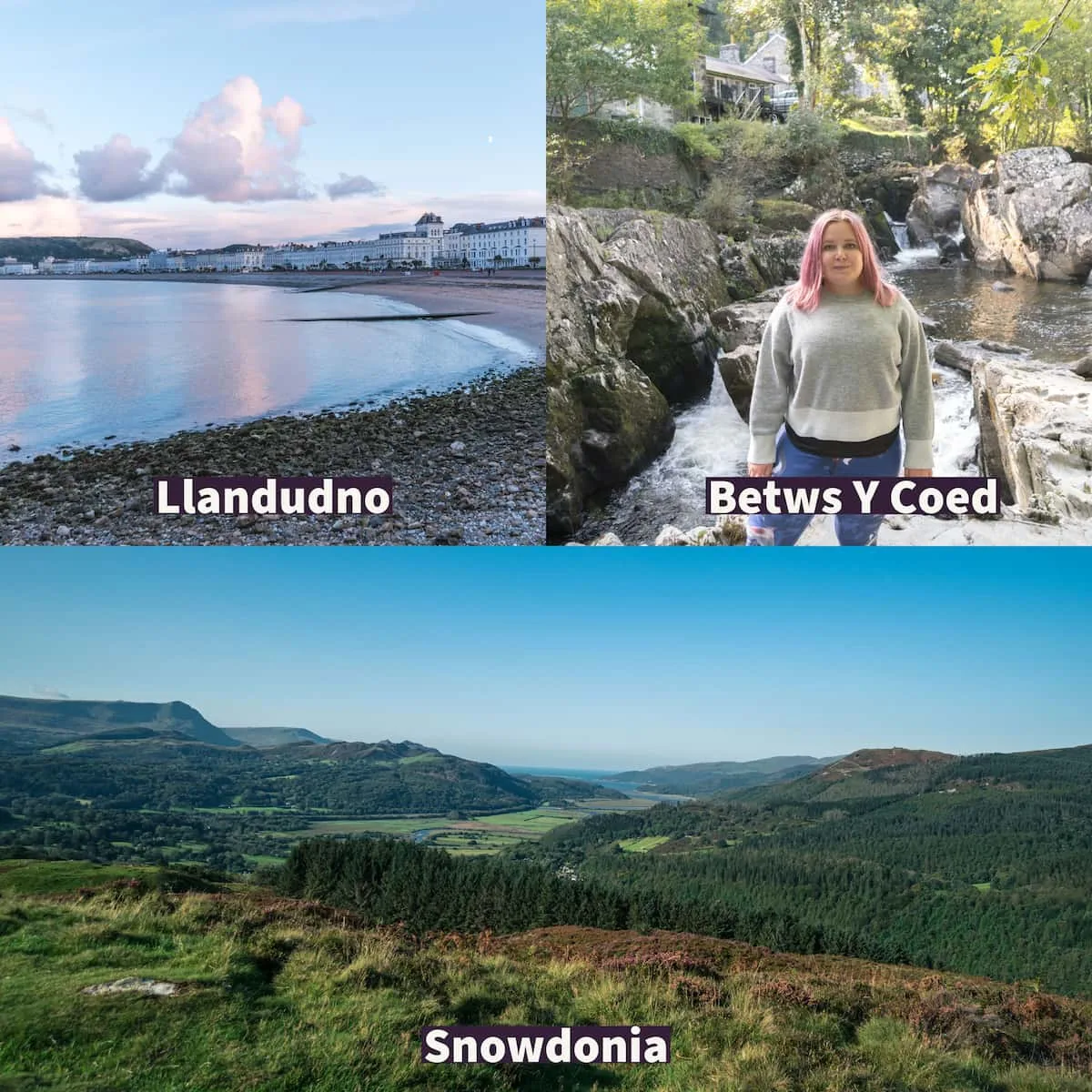
North Wales is one of Britain’s oldest established tourist regions. Snowdonia National Park covers 823 square miles and is home to Wales’ highest mountain, Snowdon (1,085 metres). There are plenty of outdoor activities in Snowdonia if you’re feeling adventurous. In addition to stunning scenery, there is also plenty of culture and history to explore. Discover ancient castles, visit charming seaside towns and be wowed at some of the most unique attractions in Britain.
Start your journey in Llandudno, one of the best seaside towns in Wales, nicknamed the Queen of Welsh Resorts. This Victorian seaside resort is home to the longest pier in Wales which stretches 700m out to sea. Grab a bite to eat and walk along the magnificent promenade to enjoy the views. Another fun thing to do is to ride on the Great Orme Tramway to visit the world’s largest prehistoric copper mines.
Next, catch the train to Betws Y Coed (40 minutes). This picturesque village is the gateway to the peaks and lakes of Snowdonia National Park. Surrounding the village is Gwydir Forest Park. Full of leafy trails, waterfalls, and mountain lakes, it’s a magical place for a walk. Want to get your pulse racing? Betws Y Coed is at the centre of mountain biking, with the Marin Route taking you around the peaks and pines of the Gwydir Forest.
Next stop, Blaenau Ffestiniog (35 minutes). Once a famous slate mining town, Blaenau Ffestiniog now relies on tourists who come to visit the Llechwedd Slate Caverns. This is one of the most unique attractions in Wales and shouldn’t be missed. Head deep underground via cable railway and step into the world of a slate miner. See how slate was mined through multimedia displays that shows the harsh working conditions to life – be prepared to duck as you scramble through dark tunnels.
From Blaenau Ffestiniog, you’ll hop on the heritage Ffestiniog Railway which runs to Porthmadog.
Porthmadog is a bustling harbour town, once the busiest slate port in North Wales. The town has a picturesque harbour and plenty of shops and attractions, including the nearby Portmeirion. This is an Italianate style village with a variety of shops, cafes, a picturesque piazza, exhibitions and displays. From Porthmadog, climb aboard the Welsh Highland Railway which runs from Porthmadog to Caernarfon.
One of the stops you should visit is Beddgelert. This is a picturesque village just south of Snowdon. It won’t take you long to walk around the village and admire the pretty buildings – make sure you stop by a traditional cafe or tea room for a drink.
From Beddgelert, hop on the train again. If you’ve decided to challenge yourself to a climb up Snowdon, get off the train at Rhyd Ddu. This village is a starting point for walks up Snowdon, and is one of the traditional routes up the mountain.
The last stop on the Welsh Highland Railway is Caernarfon. The town is home to Wales’ most famous castle and UNESCO World Heritage Site. The magnificent Caernarfon Castle was built in the 13th century by Edward I as a royal palace and military fortress. You can take a tour of the castle and learn more about its history. After the castle, make your way through the town’s narrow streets and to the vibrant waterfront.

Cornish Explorer
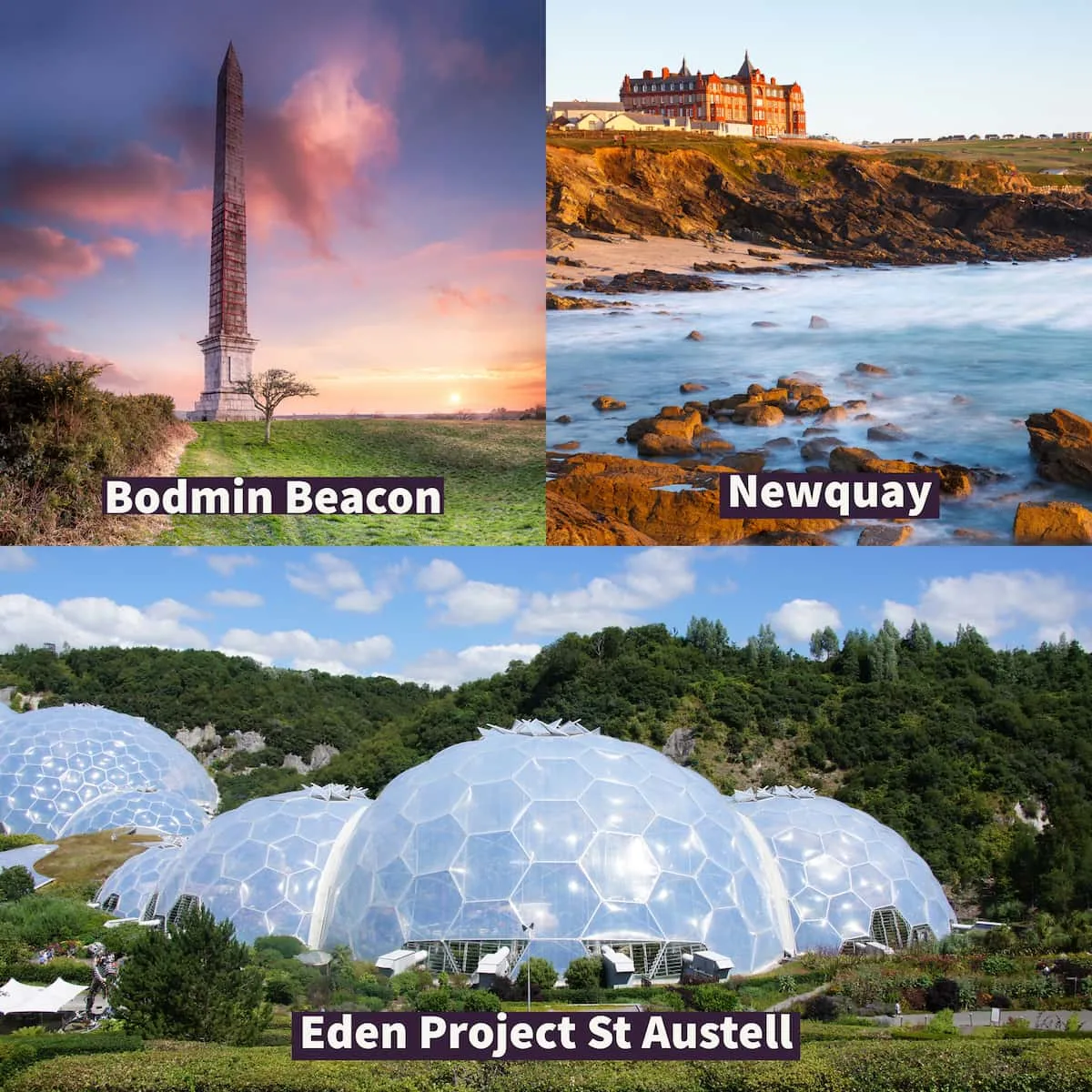
Cornwall is a county on the very southwestern tip of England. With over 400 miles of coastline, it’s one of the UK’s favourite summer holiday destinations. The south coast of Cornwall is nicknamed the Cornish Riviera for its collection of picturesque seaside villages. Meanwhile, the north coast is dotted with towering cliffs and seaside resorts. But look beyond the sandy beaches and sparkling blue waters and you’ll find world-class galleries, unique attractions, glorious countryside and fantastic food.
Start your journey in Bodmin. There is plenty to do in this historic town which was once Cornwall’s county town. Bodmin Jail is one of the most interesting places to visit, dating back to the 18th century. Take a tour and soak up the spooky ambiance! A great picnic spot is the hilltop of Bodmin Beacon which overlooks the town. Check out the 144 foot tall Gilbert Memorial. Want to visit a historic house? Lanhydrock is one of the finest country houses in Cornwall. Owned by the National Trust, this fine Victorian manor has 50 rooms open to the public.
Next, head to Newquay (1 hour and 9 minutes). Known as the surf capital of England, Newquay has an array of incredible sandy beaches where you can try some watersports or simply relax. The town is an important fishing port, and a trip to Newquay Harbour is a must. From here you can join fishing trips and excursions. Trenance Gardens and boating lake is a great place for a relaxing lunch before you head to Trenance Leisure Park.
From Newquay, hop on the train to St Ives (2 hours and 24 minutes). St Ives is known for its surf beaches and strong art scene. Porthmeor is the best known beach, popular with swimmers and surfers. It backs onto the Tate Gallery, a must-visit if you’re interested in art. For more art, the Barbara Hepworth Sculpture Garden is a fantastic place to see where one of St Ives’s most influential artists worked. A unique activity in St Ives is to take a bat trip out to Seal Island to get up close to grey seals.
Next, head to Penzance (23 minutes), the most westerly major town in Cornwall. Stroll down Chapel Street, the most historic street in Penzance. Running from the town centre to the harbour, Chapel Street is lined with shops, houses and hotels, many of which date back to the 18th century. Just around the corner you’ll find The Exchange, a contemporary art gallery. Ranging from local to international artists, there’s plenty to be seen here. Down on the seafront, you’ll find Jubilee Pool, a beautiful art deco seawater lido.
Next up, Falmouth (1 hour and 12 minutes). The town has a pretty old harbour and docks on one side of town, with sandy beaches on the other. Positioned on the headland is Pendennis Castle. It’s open to the public and is definitely worth a visit. On the dockside, the National Maritime Museum is a fun way to kill a few hours. Set over three floors, it covers all things nautical. For some beaches, you have the choice of Gyllyngvase beach or Swanpool beach within walking distance of town.
From Falmouth, hop on the train to Truro (28 minutes). While you’re in Cornwall, you should definitely visit one of its many gardens. The subtropical climate means there’s an abundance of unique plants to see, and Trelissick is one of the best gardens in the county. For some history, check out Truro Cathedral. There are free guided tours around this lovely Gothic Revival building. If you visit between April and October, Enterprise Boats run different cruises between Truro’s harbour and Falmouth which sail through the AONB on the Fal River.
The last stop on the Cornish explorer is St Austell (15 minutes). A must-see is Eden Project, two giant biomes featuring plants collected from around the world. Next, head to the Lost Gardens of Heligan. The magnificent 19th century gardens are a real-life secret garden. To explore Cornwall’s mining history, visit Wheal Martyn, part of the Cornish Mining World Heritage Site. It’s the UK’s only china clay museum with plenty of interactive things to do.
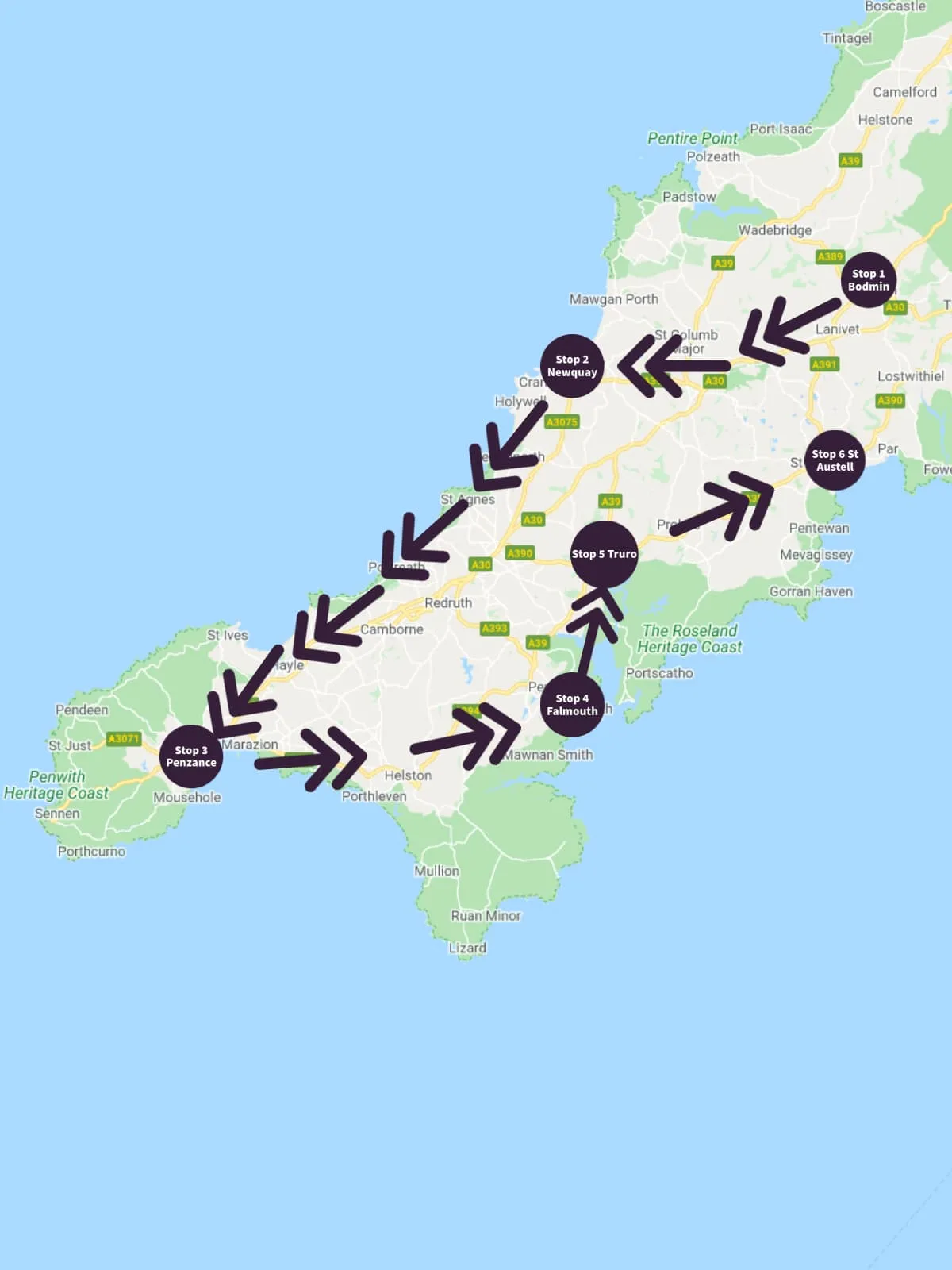
The UK’s Historical Southern Cities
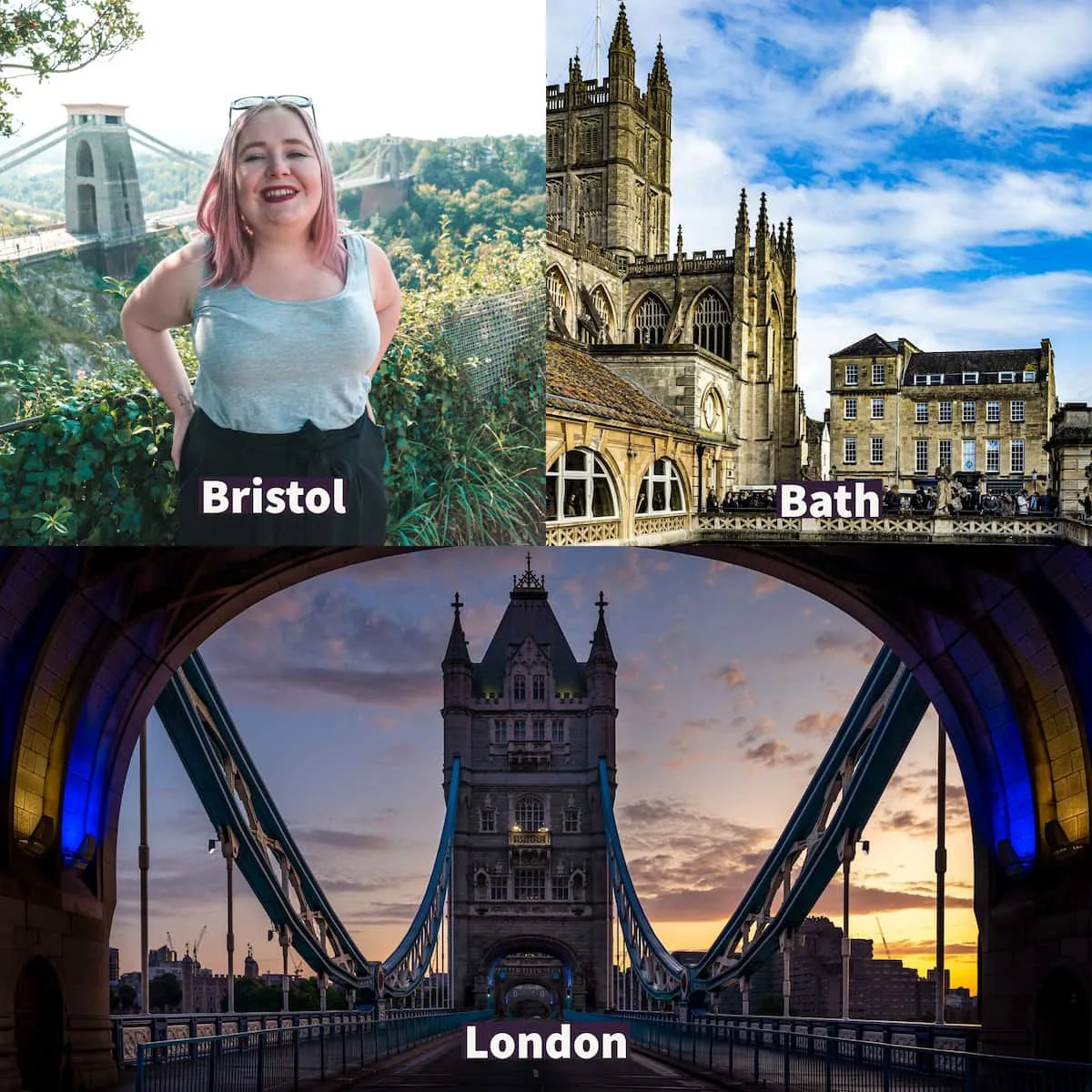
On this Bristol to London journey, you’ll be stopping at some of the UK’s most historic cities in the south of England. There are plenty of things to do and each city offers something different. From the vibrant port city of Bristol, the university city of Oxford, to the world-class city of London, hop on this journey to discover the best of the UK’s cities.
Start your journey in Bristol. Straddling the River Avon, the city has a rich maritime history with lots to see and do. Once the main port, the Harbourside is now a cultural centre where you’ll find tons of attractions, markets, bars, restaurants, sports and activities.
If there’s only one thing you do here, make sure it’s climbing aboard Brunel’s SS Great Britain, an iconic ship and museum.
A must-see in the city is the Clifton Suspension Bridge, an engineering feat spanning the Avon Gorge and the River Avon. Walk across it or admire the views from the grassy parkland.
Next, head to Bath (11 minutes). No visit to Bath would be complete without seeing the Roman Baths. See how the Romans used to relax, and learn what life was like through interactive exhibits. Although you can’t bathe there, you can take a dip at the Thermae Bath Spa. The luxurious rooftop pool offers 360 views of the city as well as treatments and relaxation spaces.
For more views, climb Bath Abbey’s tower. Bath is home to a whole array of museums and galleries to dive into. Whether it’s Victorian life or fashion, you’re bound to find something interesting.
After Bath, journey on to Salisbury (56 minutes). This medieval cathedral city is the departure point for Stonehenge, as it’s only nine miles south of the prehistoric stone circle. It goes without saying that a quick trip to Stonehenge is a must. After that, make sure you see more of the city itself. Check out the impressive Salisbury Cathedral, home to the best preserved Magna Carta. Book onto a Tower Tour for some panoramic views. Check out Salisbury Market Place for a range of markets held throughout the week, including the Charter Market which dates back to medieval times.
Next stop, Winchester (56 minutes). Right on the edge of the South Downs National Park, it’s a great base for exploring the Park and trying out some outdoor activities like climbing, hiking and mountain biking. Winchester Cathedral is the longest Gothic cathedral in Europe and is full of exquisite details, perfect for history lovers. For more history, the Winchester City Museum is bursting with things to see. Dating back to 1861, it’s home to Roman artefacts, Edwardian costumes, and Jane Austen’s personal belongings.
From Winchester, catch the train to Oxford (1 hour and 22 minutes). This famous university city is best explored on foot. Start with a University of Oxford tour for a behind the scenes look at the magnificent campuses. The Oxford Botanic Gardens and Arboretum is the UK’s oldest botanic garden and set within 130 acres of woodland – the perfect place for green thumbs. The Pitt Rivers Museum is a museum you can actually get excited about, with half a million (very fascinating) exhibits. Another great way to see the city is by going on a punting tour. Glide down the River Cherwell and see the city’s iconic landmarks from a unique angle.
Last but not least, London (53 minutes). London has it all, so whatever you’re interested in, you won’t be disappointed. If it’s your first time here, then it could be fun to play tourist and see all the main attractions like the London Bridge, the Tower of London, London Eye and Buckingham Palace. London also has numerous museums covering everything from science to fashion to transport. Are you a foodie? London’s street markets, cafes and restaurants don’t disappoint.
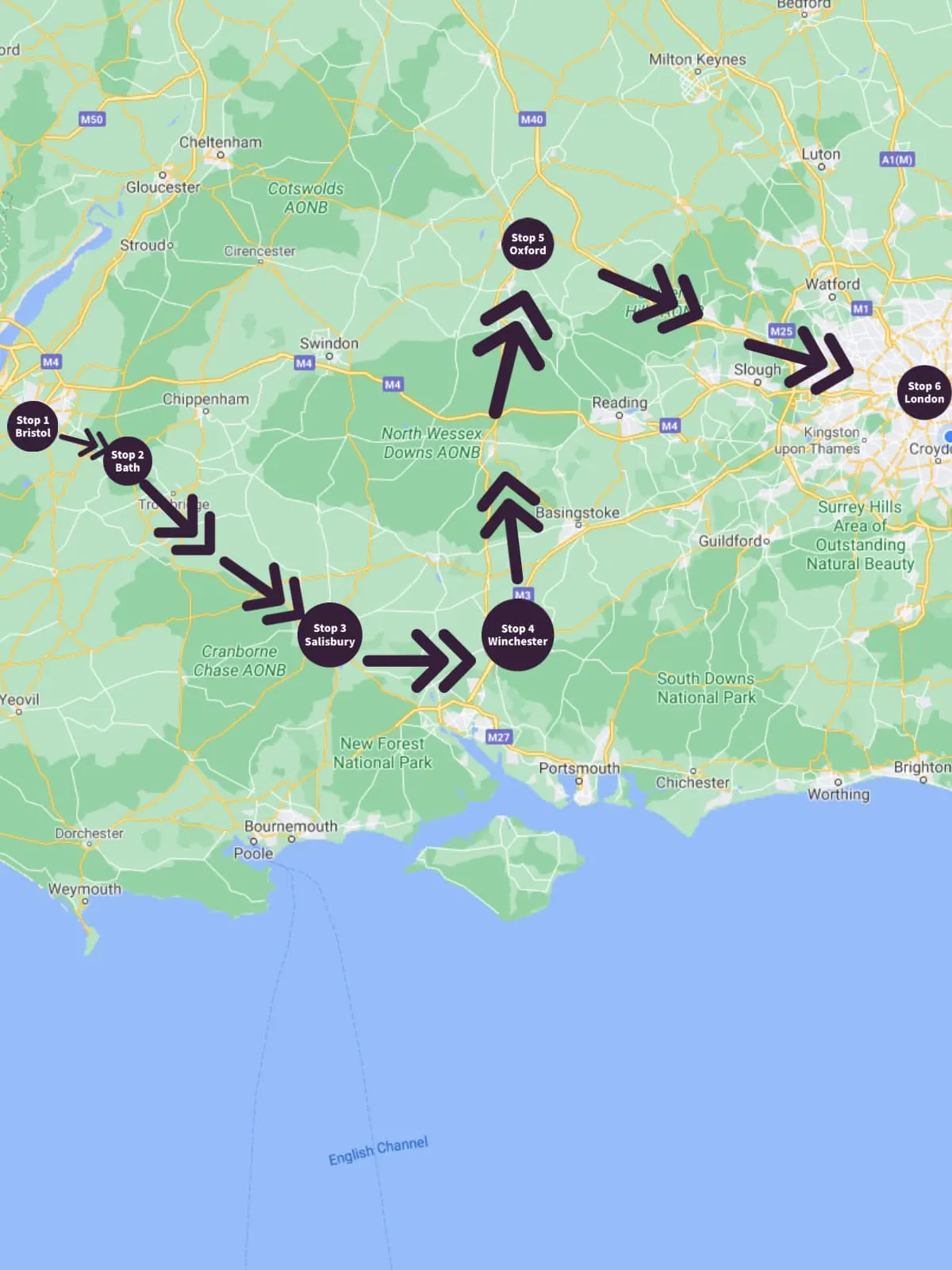
More UK Articles
How to Explore the Lake District (If You Don’t Have a Car)
11 Prettiest Towns and Villages in the Lake District
10 Brilliantly British Foods You Must Try in London
18 Things to Do in Yorkshire for Couples
16 Ways to Avoid Looking Like a Tourist in London
24 Famous Landmarks in England

Kat
Hi, I'm Kat, an Australian that moved to London in 2013 to start a new adventure. What a roller-coaster that was! I love helping others move to the UK and people explore the world! I’d be honoured if you’d say, “Thanks!” with a £3 coffee on Ko-fi.

